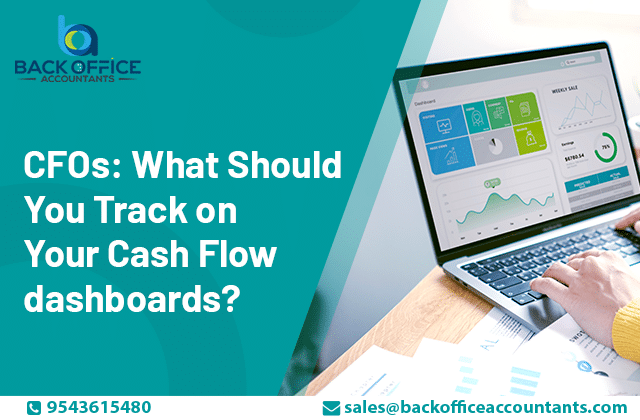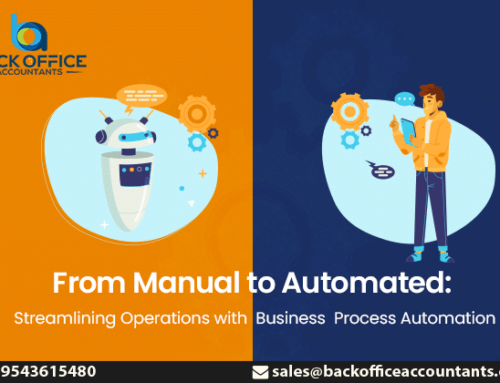As a business owner or CFO, you know that cash flow is the key to the survival of your company. Without it, you can’t pay your bills, make payroll, or invest in growth. That’s why tracking your cash flow process closely is important. But what’s the best way to do that? A cash flow dashboard is a great way of tracking your company’s financial health. Many businesses use dashboards to track their key performance indicators (KPIs).
In this article, we’ll discuss why cash flow dashboards are essential for businesses and what you should include in yours. We’ll also give you some tips on how to use your dashboard to improve your cash flow management.
Why are Cash Flow Dashboards Important?
As a CFO, one of your primary responsibilities is to ensure that your company has the financial resources it needs to operate effectively and efficiently. To do this, you need to have a clear understanding of your company’s cash flow situation.
Dashboards can be an extremely valuable tool in helping you track and manage your company’s cash flow. Dashboards provide a quick and easy way to see how much cash is coming in and going out, as well as where it is being spent. This information can be invaluable in helping you make decisions about how to use your company’s financial resources best.
There are numerous software programs that offer dashboards designed explicitly for tracking cash flow. These dashboards can be extremely helpful in managing your company’s finances. However, it is crucial to understand which data to track and place them according to their significance on the dashboard.
You can use cash flow services from a reputed company to track your cash flow dashboard and design it at par with your requirements. In addition to tracking your company’s overall cash flow, these companies provide accounts receivable services. With this, you can also keep track of your accounts payable through their accounts payable services. Tracking these information can be extremely helpful in identifying areas where your company may be spending too much or not enough money. Dashboards can also help you identify trends over time, which can help forecast future cash flow needs.
Important Cash Flow Dashboard Metrics
One of the most important responsibilities of a CFO is to ensure that your company has enough cash to meet its financial obligations. This means tracking your company’s cash flow process regularly and ensuring enough money is always available to cover the bills. A dashboard helps you manage these aspects in a short time and helps you find details quickly.
One of the key aspects of analyzing a cash flow dashboard is to understand key metrics. In the case of a cash flow dashboard, the following metrics are pivotal.
- Cash Balance:The cash balance is the most basic and essential metric that CFOs should track on their cash flow dashboards. It is crucial to know how much cash the company has on hand and whether it is increasing or decreasing over time.
- Cash Flow Statement:CFOs should track the cash flow statement to understand how cash is flowing in and out of the company. The cash flow statement provides information about the company’s operating, investing, and financing activities, which can help CFOs identify areas where cash is being used or generated.
- Cash Conversion Cycle (CCC):CCC measures the time it takes for a company to convert its investments in inventory and other resources into cash. By tracking CCC, CFOs can identify the efficiency of the company’s cash conversion process and take steps to improve it.
- Accounts Receivable Turnover:This metric tracks the number of times the company collects its accounts receivable over a given period. It is a critical measure of how efficiently the company is managing its outstanding debts and cash flow.
- Accounts Payable Turnover:This metric measures the number of times the company pays its suppliers over a given period. It is an essential measure of how efficiently the company is managing its payment obligations and cash flow.
- Free Cash Flow:Free cash flow measures the amount of cash generated by the company’s operations after accounting for capital expenditures. CFOs should track free cash flow to understand how much cash is available for debt repayment, dividends, and other investments.
- Cash Burn Rate:The cash burn rate measures the rate at which the company is spending its cash reserves. It is a critical metric for startups and early-stage companies that have not yet generated positive cash flows. By tracking the cash burn rate, CFOs can ensure that the company has enough cash to operate and grow.
- Forecasted Cash Flow:CFOs should also track forecasted cash flow to understand how much cash the company is expected to generate or use in the future. Forecasted cash flow can help CFOs identify potential cash shortfalls or surpluses and take steps to address them.
Conclusion
If you are a CFO, tracking your company’s cash flow is important to make sound financial decisions. Dashboards are an effective way to provide a clear and concise overview of your company’s cash flow. Checking key metrics when analyzing a cash flow dashboard ensures to keep you on top of your game. If you find these difficult to maintain, many companies are offering CFO’s services to keep your cash flow on track through a dashboard customized as per your needs. By availing these bookkeeping and accounting services and tracking your company’s cash flow, you can make informed decisions to improve your bottom line.







